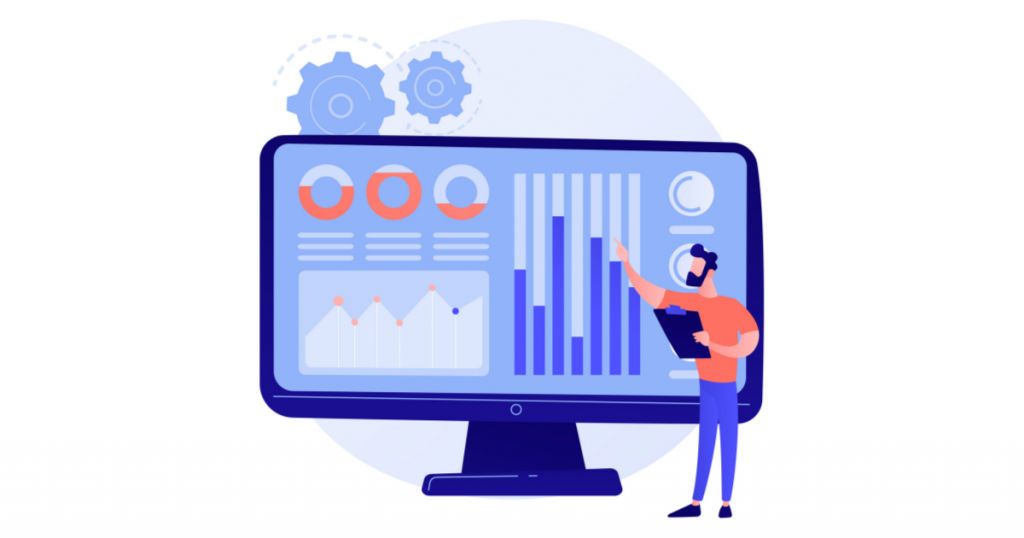
When it comes to running a successful business, there are several areas that play a crucial role. One such role is carried out by the marketing team. Having effective and efficient marketing strategies have a huge impact on the growth and success of any business. The right marketing strategy can help you to reach your target audience, build your brand’s reputation and goodwill, and encourage consumers to buy/invest in your products and services. Marketing strategies also help businesses to focus on their goals and achieve them in a timely manner.
Today, there are different types of marketing strategies and performance marketing is one such strategy that is rising in popularity. So, what is performance marketing? Why are industry experts singing its praises? Read on to find out all that you need to know about performance marketing.
Table of Contents
What is performance marketing?
In simple words, performance marketing can be described as marketing that is based on performance. What this means is that it is a type of marketing where you will pay the marketing companies or advertising platforms only when the intended actions or goals are met. In this type of digital marketing, actions refer to a click, sale, or lead. It may come as a surprise to many that performance marketing is actually not a new phenomenon, rather it was prevalent even during the mid-90s when the pay-per-click campaigns began.
The development of new technology, especially tools and software that allow businesses to measure and analyze the traffic and performance of their ad campaigns has resulted in the rise and popularity of performance marketing. With access to such crucial data, businesses are depending mostly on performance marketing as it is comparatively a more result-oriented and successful marketing strategy.
Since the primary goal of performance marketing is ensuring a successful action, performance marketers are able to create and optimize their campaigns accordingly which results in a win-win situation for both the parties involved.
How does performance marketing work?

Most of the performance marketing platforms focus on the bid placed by the advertiser, the quality and relevance of the ad, and the projected number of actions. Though most of these platforms work in the same way, different channels obviously cater to specific audiences. This means that they also offer various types of platforms for advertising so that you can reach your intended audiences. For example, Facebook offers its advertisers several options to display their ads when the audiences visit their Facebook or Instagram platform. Similarly, Google shows the ads on the search results page.
It is not possible for each platform to show all the available ads at the same time to everyone. So, these performance marketing platforms take into consideration a combination of factors like –
- Target audience – Each of these platforms offer audience segments so that you have a better chance of reaching your target audience.
- Bid – These platforms come enabled with programming capabilities that take into consideration the amount that you have bid in order to display your advertisement to your intended target audience, at a specific time and place.
- Quality and relevance – The performance of the ad is a crucial factor. If your ad is not generating good quality ratings, its exposure will be reduced by the ad platform.
- Conversion – The base line of performance marketing is dependent on customers taking action. The ad platforms get paid only when the intended action takes places. So, your ad is displayed more when it works.
Types of performance marketing
Below are some of the different types of performance marketing –
1. Native advertising
When it comes to looking at ads, most people tend to be unobservant and they might also have ad blockers in place. Native advertising helps in overcoming this as they do not look like your regular ads. Instead, they adapt to the look and feel of the web page on which they are displayed. Native ads can fit in dynamically based on the content that the user is looking at.
The key factors of native advertising include –
- Providing high-quality and high-value content.
- Implementing smart distribution using the right publishers.
Some of the popular native advertising software include –
Pay-per-impression or pay-per-click are two of the common native advertising metrics.
2. Sponsored content

Sponsored content is a type of native advertising and it is also one of the best ways to let your audience know about your brand and attract their attention. Sponsored content needs to be creative and it should act as a solution to your customer’s problem. When you create effective sponsored content, it can reap terrific value for your marketing strategy.
When executed in the right way, sponsored content can increase qualified traffic, conversion, and overall online presence in front of your target audience. This type of performance marketing has proved to be successful for the advertisers as well as the performance marketers.
Sponsored content can be of different shapes and forms, such as –
- Photos
- Videos
- Listicles
- Articles
- Sponsored tweets on Twitter
- Carousel ads
- Snapchat stories
- Instagram TV episodes
- Infographics
- Facebook stories
- YouTube videos
- Sponsored pins on Pinterest
- Podcasts
Some of the common compensation forms for sponsored content include free product/service, cost-per-mile, cost-per-lead, or cost-per-acquisition.
3. Social media advertising
Social media platforms are some of the best platforms to reach your target audience. With digital content taking over traditional content, it is not surprising to see an increase in social media advertising. This type of performance marketing is a great way to increase your brand’s online presence and address your target audience.
The primary objectives of social media advertising include increasing lead generation, traffic, engagement, and sales. As an advertiser, you need to keep a couple of things in mind while selecting the right social media platform for your advertising needs. These are –
- How compatible is the social media platform’s demographic with your brand?
- How much traction have you gained through organic efforts on the platform?
- How do your competitors approach the social platforms?
- What are the different ad formats that can be used?
The performance metrics for social media advertising comprises likes, shares, comments, clicks, sales, checkout, etc.
4. Search engine marketing (SEM)

Search engine marketing includes both organic as well as paid marketing. Today, SEM is considered as one of the most worthwhile type of performance marketing – all thanks to Google Adwords program. The core of any SEM is keywords which is why it is highly recommended that brands invest their time and money in keyword research which will further increase their chances of being seen when their intended customers type the keyword.
SEM is a real-time auction system which means that any time a keyword is searched, an auction process takes place. Advertisers take part in this auction and bid on various keywords. Though it may sound complex, SEM has a high return on investment (ROI).
5. Affiliate marketing
Affiliate marketing is a type of performance marketing in which the affiliate market’s another company’s products/services and earns a commission when a sale is conducted. Affiliate links are used to track the sales. These affiliates act as your brand’s extension and help in driving traffic for you.
Today, there are several affiliate marketing software that come loaded with several features, such as tracking and reporting on commission-triggering actions, monitoring growth, receiving statistical analysis reports in real-time, etc.
These software basically act as a middleman between the advertisers and the marketers.
Performance marketing strategy
With so many different platforms to choose from, there is no one-size-fits all performance marketing strategy. However, you can follow the below five steps which are common for building an effective performance marketing strategy –
- Define your campaign goals – The first step is to of course define your campaign goals so that you can develop effective marketing campaigns. Some of the common goals include brand awareness, traffic, remarketing or retargeting, engagement, lead generation, and sales.
- Choose your preferred digital platform – It is highly recommended that you opt for multiple platforms rather than focusing on only one digital platform. This will increase your potential reach and target more audience.
- Creating and launching your campaign – Creating the right campaigns is one of the crucial tasks of performance marketing. From understanding what your target audience needs to nailing all the technical details of the campaigns.
- Measuring and optimization of campaign – The performance marketer is responsible for optimizing the campaigns. It is also important to track and measure your ad campaigns so that brands can use the data to take informed decisions.
- Handle potential challenges – There are quite a few challenges that you need to be prepared for, such as compliance-related issues, privacy regulations, publisher fraud, and placement transparency, etc.
Benefits of performance marketing

Below are the top three benefits of performance marketing –
- Easy performance tracking – Performance marketing allows businesses to target and measure various metrics like clicks, impressions, sales, etc. Based on the insights, businesses can analyze and adjust their ad campaigns accordingly.
- Focus on ROI – Performance marketing focuses on ROI which allows businesses to always look at ways to improve their campaign performance.
- Reduced risk – Performance marketers are always in the loop and well aware of what is happening with the campaign which allows them to optimize the campaign as required and reduces the possibility of risks.
Industry examples of performance marketing
Below are some industry examples of performance marketing –
- Avon – Avon is a beauty brand that opted for native advertising for their performance campaigns. They produced a campaign focusing on women empowerment. They used Outbrain’s native video inventory to measure and track the campaign’s performance.
- VAVAVOOM – This global fashion retailer created a YouTube video campaign using TrueView for Action – a type of video campaign available on Google Ads. They achieved some amazing results through this campaign.
- PANDORA – PANDORA is a French jewelry designer and manufacturer who collaborated with Taboola to create a native advertising campaign.
Common measurements of performance marketing campaigns
The below actions are the most commonly measured actions –
- Cost per impression (CPM)
- Cost per click (CPC)
- Cost per sales (CPS)
- Cost per leads (CPL)
- Cost per acquisition (CPA)
Conclusion
In order to reach your business goals, it is crucial that you invest in the right marketing strategies and build accurate campaigns. With performance marketing, businesses can choose the right platform, ad format, reach the right audience, etc. Performance marketing allows companies to build their brand and pay only for the results which means that they can save a lot of money on ineffective ad campaigns.
To find out more about similar effective software, check out SaaSworthy – a comprehensive platform with more than 40,000 software across 300 categories.
Also read:






